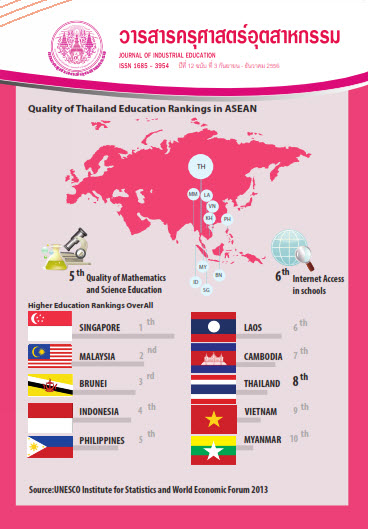Impact of Social Media Changes Marketing
Keywords:
Social media, marketing, advertisement, consumer, internetAbstract
Social media has been involved in almost every aspect of our lives. This is because of its accessibility, speed of communication, and the network effect of the tool itself. For example, Twitter, Youtube, Facebook, and Instragram have been widely adopted and become household words, penetrating and connecting the society. In this regard, social media is considered a powerful marking tool which answers to what the entrepreneur, manufacturer, and marketer need. This study aimed at investigating the impact of social media toward consumer’s media behavior, entrepreneurship and commercialization, marketing strategy, and marketing research methodology. The implication of this study is offered insights into media consumption behavior, so the all the stakeholders are able to enjoy the benefit of applying social media to both marketing and public.
References
[2] Ahlqvist, T. 2008. Social media roadmaps: exploring the futures triggered by social media. VTT Tiedotteita-Research Notes, (2454), p. 1-78
[3] Kietzmann, J. H., et al. 2011. Social media? Get serious! Understanding the functional building blocks of social media. Business Horizons, (2011)54, p. 241-251.
[4] Bughin, J., Chui, M. and Johnson, B. 2008. The next step in open innovation. The McKinsey Quarterly, 4(6), p. 1-8.
[5] Weinberg, B. D. and Pehlivan, E. 2011. Social spending: Managing the social media mix. Business Horizons, 54(3), p. 275-282.
[6] Duggan, M. and Brenner, J. 2013. The Demographics of Social Media Users: 2012. Retrieved November 10, 2013, from http://perinternet.org/Reports/2013/Social- media-users.aspx
[7] Westbrook, R. A. 1987. Product/consumption- based affective responses and postpurchase processes. Journal of marketing research, 24(3), p. 258-270.
[8] Senecal, S. and Nantel, J. 2004. The influence of online product recommendations on consumers’ online choices. Journal of Retailing, 80(2004), p. 159-169.
[9] Litvin, S. W., Goldsmith, R. E. and Pan, B. 2008. Electronic word-of-mouth in hospitality and tourism management. Tourism management, 29(3), p. 458-468.
[10] Godes, D. and Mayzlin, D. 2004. Using online conversations to study word-of-mouth communication. Marketing Science, 23(4), p. 545-560.
[11] Goldsmith, R. E. 2006. Encyclopedia of E-commerce, E-Government and Mobile Commerce. PA: Idea Group Publishing.
[12] Vahlberg, V. 2010. Fitting into their lives: a survey of three studies about youth media usage. Retrieved November 10, 2013, from http://www.naafoundation.org/docs/ foundation/research/fitting_into_their_lives.pdf
[13] Miller, R. and Lammas, N. 2010. Social Media and its implications for viral marketing. Asia Pacific Public Relations Journal, 11(1), p. 1-9.
[14] Ramaswamy, V. 2008. Co-creating value through customers' experiences: the Nike case. Strategy & Leadership, 36(5), p. 9-14.
[15] Prahalad, C. K. and Ramaswamy, V. 2004. Co-creation experiences: the next practice in value creation. Journal of interactive marketing, 18(3), p. 5-14.
[16] Ramaswamy, V. and Gouillart, F. 2010. The power of co-creation. New York: The Free Press.
[17] Doyle, S. 2007. The role of social networks in marketing. Journal of Database Marketing & Customer Strategy Management, 15(1), p. 60-64.
[18] Palmer, A. and Koenig-Lewis, N. 2009. An experiential, social network-based approach to direct marketing. Direct Marketing: An International Journal, 3(3), p. 162-176.
[19] Treadaway, C. and Smith, M. 2010. Facebook marketing an hour a day. Indianapolis: Wiley Publishing.
[20] Casteleyn, J., Mottart, A. and Rutten, K. 2009. How to use Facebook in your market research. International Journal of Market Research, 51(4), p. 439-447.
[21] Hair, N., Clark, M. and Shapiro, M. 2010. Toward a Classification System of Relational Activity in Consumer Electronic Communities: The Moderators’ Tale. Journal of Relationship Marketing, 9(1), p. 54-65.
[22] Chu, S. C. 2011. Viral advertising in social media: Participation in Facebook groups and responses among college-aged users. Journal of Interactive Advertising, 12(1), p. 30-43.
[23] Hoffman, D. L. and Fodor, M. 2010. Can You Measure the ROI of Your Social Media Marketing? MIT Sloan Management Review, 52(1), p. 41-49.
[24] Miller, C. C. 2009. New Starbucks Ads Seek to Recruit Online Fans. Retrieved November 10, 2013, from http://www.nytimes.com/2009/05/ 19/business/media/19starbux.html
[25] York, E. B. 2010. Starbucks Gets Its Business Brewing again with Social Media. Advertising Age, 81(8), p. 34.
[26] Kaplan, A. M. and Haenlein, M. 2011. Two hearts in three-quarter time: How to waltz the social media/viral marketing dance. Business Horizons. 54(3), p. 253-263.
[27] Argenti, P. A. 2004. Collaborating with activists: How starbucks works with NGOs. California Management Review, 47(1), p. 91-116.
[28] Piyapong Phumpeasert, Phadungchai Pupat and Sirirat Petsangsri. 2013. Development of Web- based Instruction on the use of Internet Searching and E-mail Communication for Occupation. Journal of Industrial Education, 12(2), p. 26.
Downloads
Published
How to Cite
Issue
Section
License
"The opinions and contents including the words in papers are responsibility by the authors."
"ข้อคิดเห็น เนื้อหา รวมทั้งการใช้ภาษาในบทความถือเป็นความรับผิดชอบของผู้เขียน"



